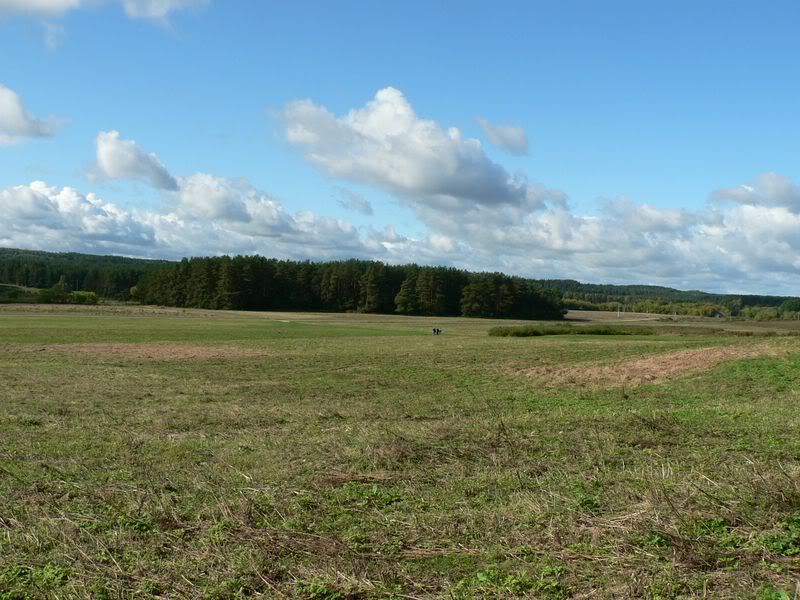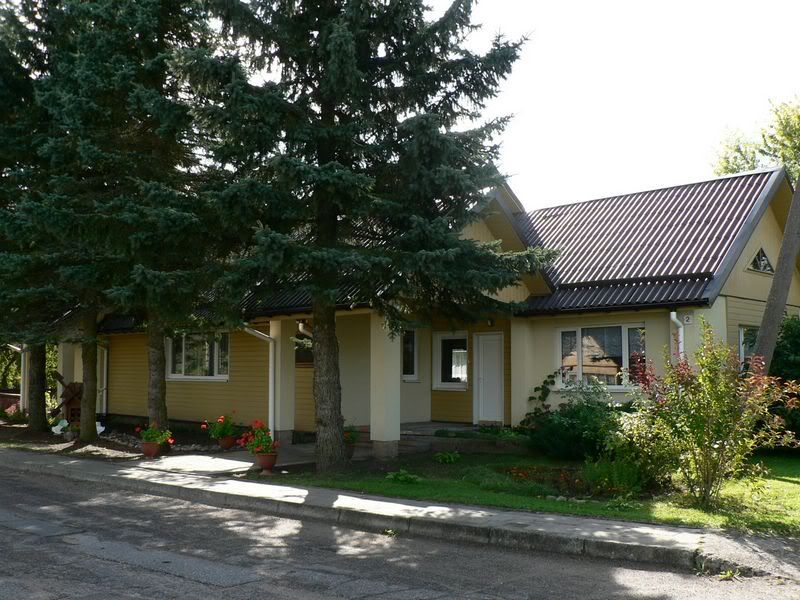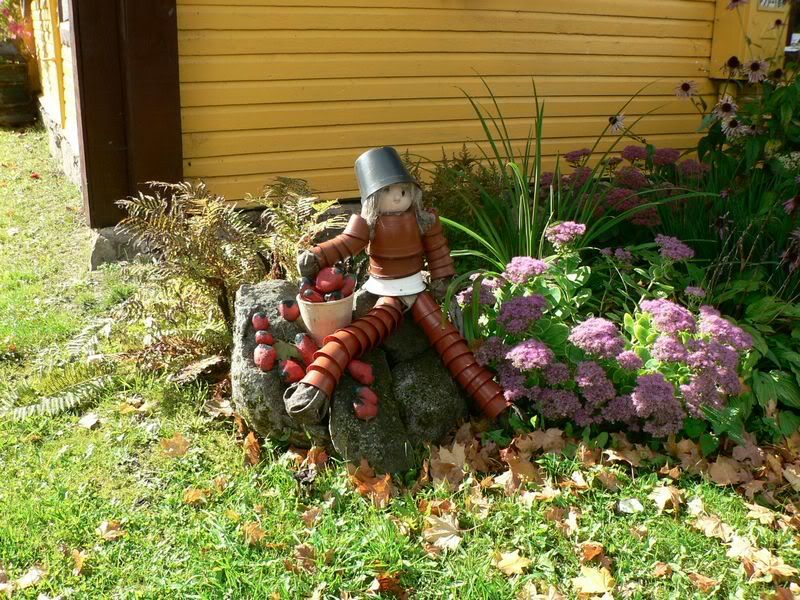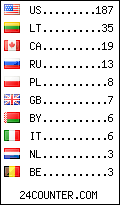Kernavė - UNESCO World heritage site in Lithuania, part 2
Final part about Kernavė:

First excavations in Kernavė were performed in XIXth century by count Tiszkiewicz. But from his findings only pagan God Thunder sculpture remained. Some excavations were done in 1930s but the real revival in research in this area is seen from 1980s. (For example this summer some findings from I-IV centuries A.D. were found (so-called Roman period)). Those excavations allowed to find that people in Kernavė lives for 12000 years without interruptions. From VIth-VIIth centuries larger settlement began to grow. In XIth-XIIIth centuries Kernavė was rather big township: there were found 8 paved streets (main street paved by stones and was paved in IXth - XIth centuries; other streets were paved by timber and the oldest pavements are dated back to the Vth century, remains of about 300 residential houses were found, etc.). Kernavė is the single place in the whole Baltic sea region with 5 fort-hills. Old Hernavė ended it's living after Crusaders attacks in 1379 and 1390 when old town was burned and the new township was rebuilt in the other place. Then remains of the old town were forgotten and time (and especially Spring floods) covered them behind the ground. All this allowed to call the place "Northern Pompei" and the place was included to the UNESCO list of World heritage sites. Also still only less than 20 percent of area was investigated despite that excavations are carried out each summer for nearly 30 years. There are plans to build partial reconstruction of old town in the neighborhood. Due to sensitivity it is very difficult to photograph archeological findings - third persons are not allowed to walk and to photograph at the place of excavations. But some of the findings are really interesting and I will use some third party photos for illustrations. The decoration ring from XIIIth century with one very old sign:

Or this needle-case with some of the needles from XIIth-XIIIth centuries:

This remains of grinded plate are from IXth-Xth century:

One of the most famous photos of Kernavė findings - woman's skull with decorations:
The archeology allowed to reconstruct the town of Kernavė in XIIIth century:
Part of the town will be reconstructed in the future. Also one of the most impressive places in Kernavė are 5 fort-hills seen on the back of the picture.

On the tallest fort-hill was pagan shrine - view from it:
This fort-hill was the main residence of the Duke:

Here once town was:
Between the fort-hills:
I am returning back:
Old church house is used as a museum of church belongings from 1996:
From modern parish house you can see building of Kernavė archeological research center and museum:
For the last few years this center was on the reconstruction and expansion and it should be opened again in 2010:
Images of archeological findings were used as a decorations for the building:

Ring shown above:
Even 800 years ago people used very similar keys to lock their houses ...
Now I am back in the modern village. This is local kindergarten building:
Such boards are used rarely these days:
Kernavė also became a place for the retired artists from Vilnius to relocate and to spend their senior years. This also leaves own imprint to the village. This is some privately owned museum:

Local art gallery:


This monument I liked most :)))
Anyway many houses in this village are decorated - better or worse:


This is one of the original remains of not so old but past periods - it works, I checked that :)))
Small maintenance and simple rural houses became cosy and nice :)))
Local primary school - built in 1928:

So at this place I will finish my reports about Kernavė :)

flag counter

First excavations in Kernavė were performed in XIXth century by count Tiszkiewicz. But from his findings only pagan God Thunder sculpture remained. Some excavations were done in 1930s but the real revival in research in this area is seen from 1980s. (For example this summer some findings from I-IV centuries A.D. were found (so-called Roman period)). Those excavations allowed to find that people in Kernavė lives for 12000 years without interruptions. From VIth-VIIth centuries larger settlement began to grow. In XIth-XIIIth centuries Kernavė was rather big township: there were found 8 paved streets (main street paved by stones and was paved in IXth - XIth centuries; other streets were paved by timber and the oldest pavements are dated back to the Vth century, remains of about 300 residential houses were found, etc.). Kernavė is the single place in the whole Baltic sea region with 5 fort-hills. Old Hernavė ended it's living after Crusaders attacks in 1379 and 1390 when old town was burned and the new township was rebuilt in the other place. Then remains of the old town were forgotten and time (and especially Spring floods) covered them behind the ground. All this allowed to call the place "Northern Pompei" and the place was included to the UNESCO list of World heritage sites. Also still only less than 20 percent of area was investigated despite that excavations are carried out each summer for nearly 30 years. There are plans to build partial reconstruction of old town in the neighborhood. Due to sensitivity it is very difficult to photograph archeological findings - third persons are not allowed to walk and to photograph at the place of excavations. But some of the findings are really interesting and I will use some third party photos for illustrations. The decoration ring from XIIIth century with one very old sign:

Or this needle-case with some of the needles from XIIth-XIIIth centuries:

This remains of grinded plate are from IXth-Xth century:

One of the most famous photos of Kernavė findings - woman's skull with decorations:

The archeology allowed to reconstruct the town of Kernavė in XIIIth century:

Part of the town will be reconstructed in the future. Also one of the most impressive places in Kernavė are 5 fort-hills seen on the back of the picture.

On the tallest fort-hill was pagan shrine - view from it:

This fort-hill was the main residence of the Duke:


Here once town was:

Between the fort-hills:

I am returning back:

Old church house is used as a museum of church belongings from 1996:

From modern parish house you can see building of Kernavė archeological research center and museum:

For the last few years this center was on the reconstruction and expansion and it should be opened again in 2010:

Images of archeological findings were used as a decorations for the building:


Ring shown above:

Even 800 years ago people used very similar keys to lock their houses ...

Now I am back in the modern village. This is local kindergarten building:

Such boards are used rarely these days:

Kernavė also became a place for the retired artists from Vilnius to relocate and to spend their senior years. This also leaves own imprint to the village. This is some privately owned museum:


Local art gallery:



This monument I liked most :)))

Anyway many houses in this village are decorated - better or worse:



This is one of the original remains of not so old but past periods - it works, I checked that :)))

Small maintenance and simple rural houses became cosy and nice :)))

Local primary school - built in 1928:


So at this place I will finish my reports about Kernavė :)
flag counter